
Starfish or sea stars are star-shaped echinoderms belonging to the class Asteroidea. Common usage frequently finds these names being also applied to ophiuroids, which are correctly referred to as brittle stars or basket stars. Starfish are also known as asteroids due to being in the class Asteroidea. About 1,900 species of starfish live on the seabed in all the world's oceans, from warm, tropical zones to frigid, polar regions. They are found from the intertidal zone down to abyssal depths, at 6,000 m (20,000 ft) below the surface.

Asterias is a genus of the Asteriidae family of sea stars. It includes several of the best-known species of sea stars, including the (Atlantic) common starfish, Asterias rubens, and the northern Pacific seastar, Asterias amurensis. The genus contains a total of eight species in all. All species have five arms and are native to shallow oceanic areas of cold to temperate parts of the Holarctic. These starfish have planktonic larvae. Asterias amurensis is an invasive species in Australia and can in some years become a pest in the Japanese mariculture industry.
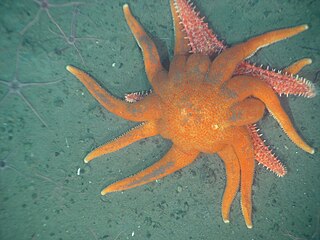
The Valvatida are an order of starfish in the class Asteroidea, which contains 695 species in 172 genera in 17 families.

The Echinasteridae are a family of starfish in the monotypic order Spinulosida. The family includes eight genera and about 133 species found on the seabed in various habitats around the world.

The Asterinidae are a large family of sea stars in the order Valvatida.
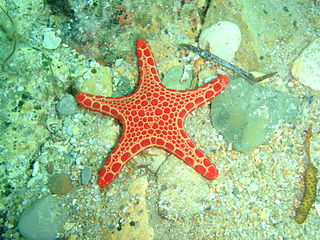
Goniasteridae constitute the largest family of sea stars, included in the order Valvatida. They are mostly deep-dwelling species, but the family also include several colorful shallow tropical species.

The Forcipulatida are an order of sea stars, containing three families and 49 genera.
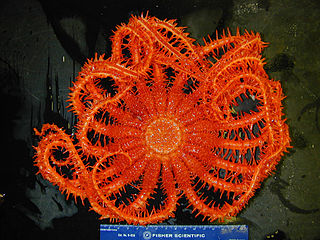
The Brisingids are deep-sea-dwelling starfish in the order Brisingida.
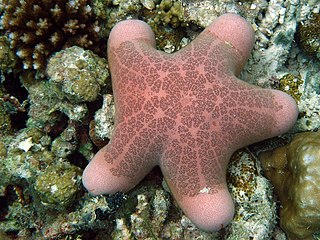
The Oreasteridae are a family of sea stars in the class Asteroidea.
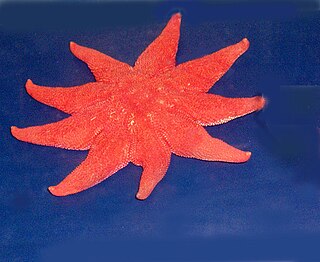
Solaster is a genus of sea stars in the family Solasteridae.

Benthopectinidae is a family of sea stars containing at least 75 species in eight genera. It is the only family in the monotypic order Notomyotida.

Pteraster tesselatus, the slime star or cushion star, is a species of starfish in the family Pterasteridae found in the North Pacific.

The Porcellanasteridae are a family of sea stars in the order Paxillosida. These sea stars are found at abyssal depths. The World Asteroidea Database includes these genera in this family:

The Freyellidae are a family of deep-sea-dwelling starfish. It is one of two families in the order Brisingida. The majority of species in this family are found in Antarctic waters and near Australia. Other species have been found near New Zealand and the United States.

The Zoroasteridae are one of three families of Asteroidea in the order Forcipulatida. It contains seven living genera and one extinct genus.

Myxasteridae is a family of deep-sea velatid sea stars containing nine species in three genera.

Pteraster is a genus of sea stars in the family Pterasteridae.
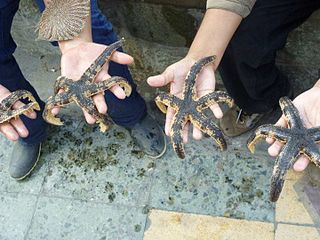
Luidia magellanica is a species of starfish in the family Luidiidae. It is found in the southeastern Pacific Ocean on the coast of South America.
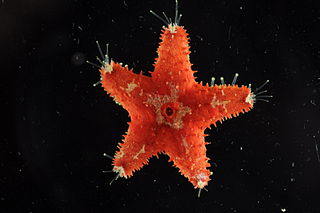
Euretaster insignis, commonly known as the striking sea star, is a species of starfish in the family Pterasteridae found in the central west Pacific Ocean. It is one of only three species in the order Velatida to be found in shallow water in the tropics. The young are brooded in a cavity underneath a "supradorsal" membrane.
Euretaster is a genus of echinoderms belonging to the family Pterasteridae.























